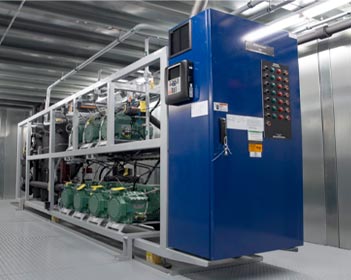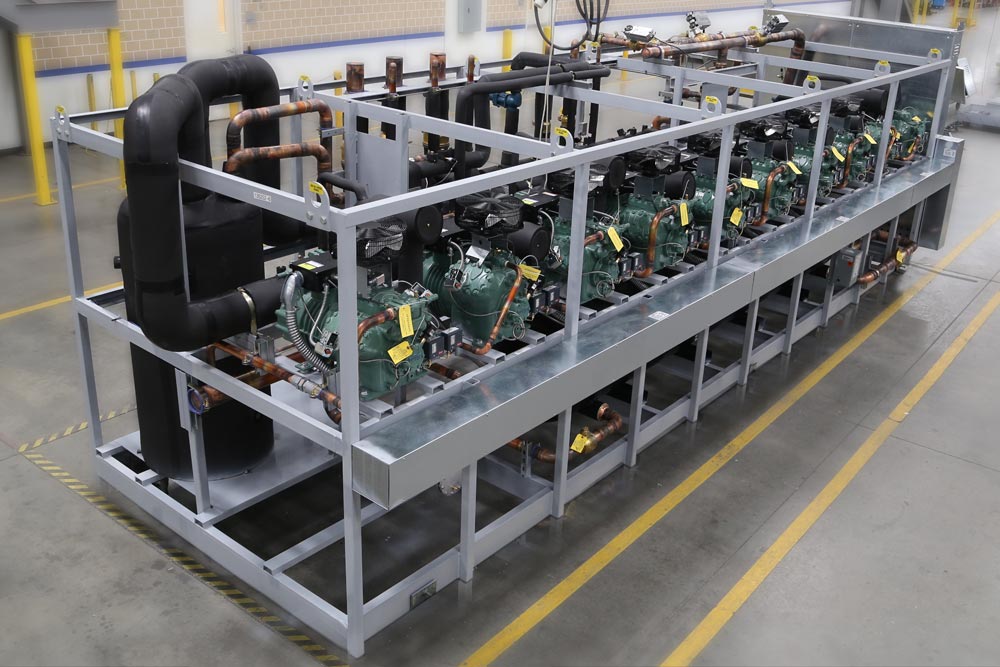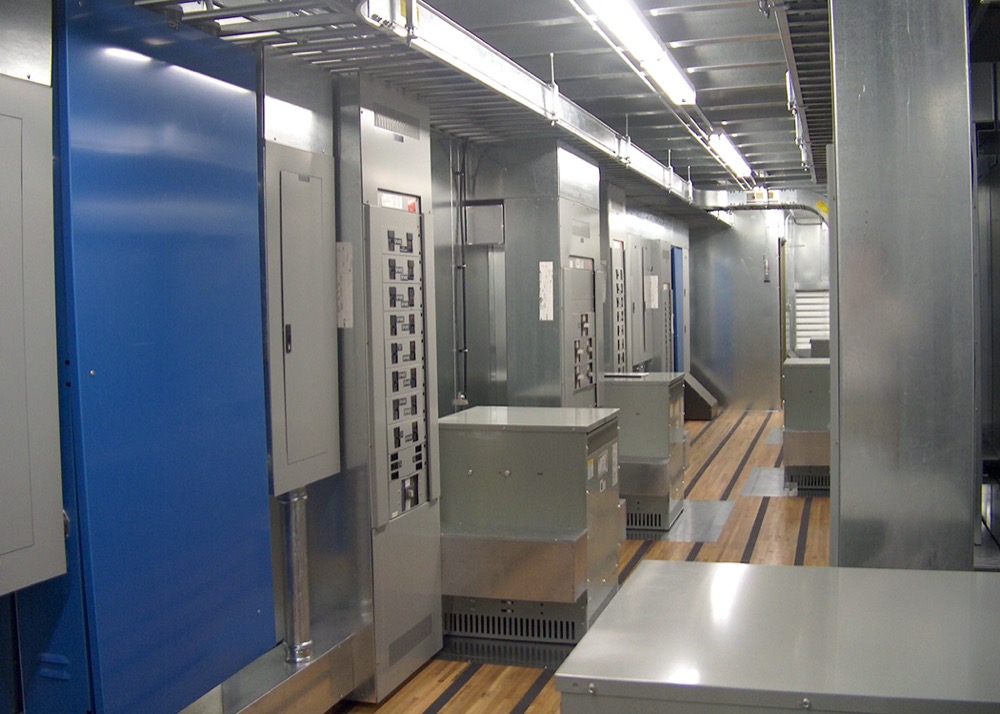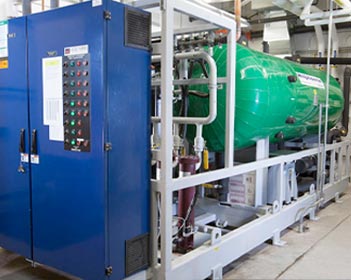Synthetic HFC, HFO Systems
Industrial Synthetic HFC, HFO Systems
Until the somewhat recent emergence of CO2 as a viable industrial refrigerant alternative, industrial refrigeration systems have traditionally relied upon two refrigeration coolant technologies for decades: Ammonia has been the de facto standard for very large systems while synthetic halocarbon refrigerants – in use since the 1920s – account for the rest. While methane-based halocarbon systems have been phased out (e.g., R-12 and R-22), ethane-based halocarbon systems utilizing HFCs are still very common today in certain types of processing facilities.
Until the somewhat recent emergence of CO2 as a viable industrial refrigerant alternative, industrial refrigeration systems have traditionally relied upon two refrigeration coolant technologies for decades: Ammonia has been the de facto standard for very large systems while synthetic halocarbon refrigerants – in use since the 1920s – account for the rest. While methane-based halocarbon systems have been phased out (e.g., R-12 and R-22), ethane-based halocarbon systems utilizing HFCs are still very common today in certain types of processing facilities.
Industrial Synthetic HFC, HFO Systems
Until the somewhat recent emergence of CO2 as a viable industrial refrigerant alternative, industrial refrigeration systems have traditionally relied upon two refrigeration coolant technologies for decades: Ammonia has been the de facto standard for very large systems while synthetic halocarbon refrigerants – in use since the 1920s – account for the rest. While methane-based halocarbon systems have been phased out (e.g., R-12 and R-22), ethane-based halocarbon systems utilizing HFCs are still very common today in certain types of processing facilities.
Until the somewhat recent emergence of CO2 as a viable industrial refrigerant alternative, industrial refrigeration systems have traditionally relied upon two refrigeration coolant technologies for decades: Ammonia has been the de facto standard for very large systems while synthetic halocarbon refrigerants – in use since the 1920s – account for the rest. While methane-based halocarbon systems have been phased out (e.g., R-12 and R-22), ethane-based halocarbon systems utilizing HFCs are still very common today in certain types of processing facilities.
Features & Benefits
- Synthetics refrigerants require minimal safety regulations compared to other A2L, B2L toxic or A3 flammable rated refrigerants and reduces or eliminates hazardous materials requirements and liability costs
- Synthetics are less corrosive when using components made from copper, brass or bronze metals.
- Built on a parallel racks architecture, synthetic refrigerants use multiple compressors mounted on a single base share common suction and discharge lines to allow refrigeration loads and temperatures to be divided across the system based on need. When loads change or maintenance is required, the other compressors adjust their output to match load demands.
- Every synthetic refrigeration system is configured, built, installed and tested at the Hillphoenix factory before it is shipped.
- Each systems is pre-wired, pre-piped, and pre-tested at the factory, then delivered to the site ready for installation.
It is well documented that today’s growing trend in refrigeration systems lies with natural refrigerants such as CO2 or ammonia. They are abundant, and thus less expensive, to use. They have zero impact on the environment, while delivering excellent economy and performance. But for those customers who choose to rely upon the more traditional, synthetic refrigerants such as HFCs and HFC/HFO blends, Hillphoenix has engineered a powerful solution.
A Perfect Match.
Finally there is a refrigeration system that marries all the benefi ts of synthetics with the superior performance and fl exibility of the parallel rack architecture Hillphoenix has been building for decades. Synthetic Parallel Rack Systems offer a welcome alternative for industrial customers in every business category.
Synthetics Are A Safe Choice.
Unlike the most popular natural refrigerant used in industrial applications — ammonia — synthetics like HFCs and HFC/HFO blends are much less toxic and less fl ammable. Whenever ammonia leaks occur, the public must be alerted and appropriate steps taken immediately. Ammonia is a toxic, life threatening substance and its misuse is a cause for immediate concern. Not so with HFCs and HFC/HFO blends.
Synthetics Are Less Corrosive.
Leaks in an ammonia-based system are more commonplace because ammonia is highly corrosive. It’s not compatible with “yellow metals” at all (copper, brass, or bronze). And the metal those systems often use, in carbon steel piping and containment vessels for example, can be subject to rust. Synthetics, when used in a parallel rack system, have none of those problems.
Parallel Racks Have Built-in Advantages.
Parallel Rack Systems come on custom-designed platforms built around multiple compressors—as many compressors as an application might need—linked in parallel. Multiple compressors mounted on a single base share common suction and discharge lines to allow refrigeration loads and temperatures to be divided across the system based on need. Plus, every assembly is confi gured, built, installed and tested at the Hillphoenix factory before it is shipped. Pre-wired, pre-piped, and pre-tested to begin working right away with application-specific compressors and capacity steps.
Shared Loads Increase Efficiency.
Multiple compressors serving a single load—choose from reciprocating compressor and/or screw compressors—come with an unmatched level of effi ciency. Total refrigeration load divided among multiple compressors allows for more precise capacity control. (Available in ten to two-hundred-fi fty-ton capacities.) Compressor(s) can be turned off as opposed to mechanical unloading which leaves compressors operating and consuming energy. And, when loads change or maintenance is required, the other compressors in line adjust their output to match load demands—with no interruptions or degraded performance.
Related Products

CO₂ Booster Systems
The Advansor transcritical booster system utilizes only one refrigerant the abundantly available, completely sustainable and economical CO2. CO2 is neither…
Mechanical Center
Hillphoenix® makes sure you get nothing short of the best-designed, best-built, industrial refrigeration mechanical centers possible. Our proven “work cell”…




